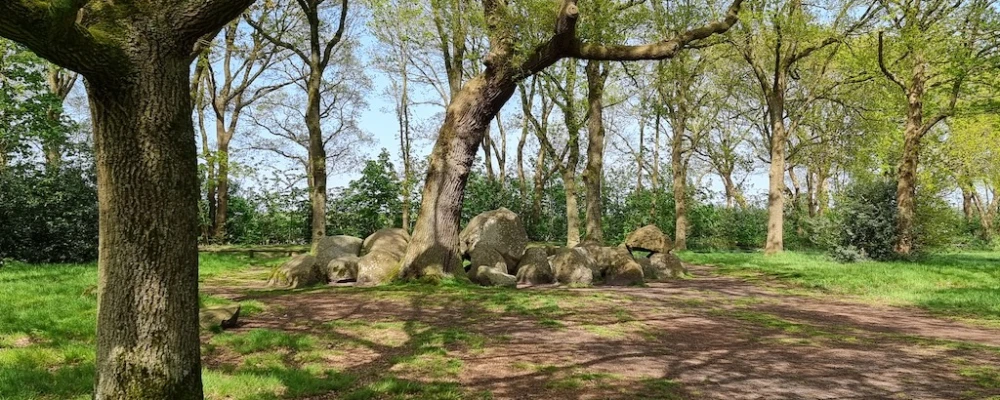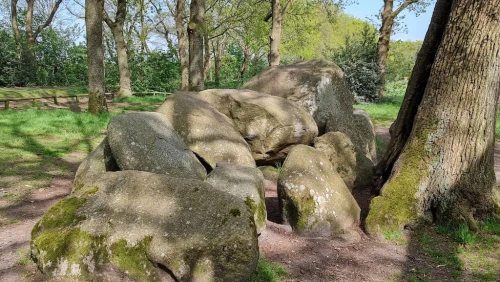In the enchanting surroundings of Rolde, located in the Dutch province of Drenthe, dolmen D17 rises as a monument of centuries-old history and cultural heritage. This impressive dolmen, also known as Rolde Noord, is not only a physical structure, but also a tangible link to the past of our ancestors, with a history dating back to the Neolithic.
Geographical
Dolmen D17 is located northeast of Rolde, near the cemetery and St. Jacob's Church, on the es. The immediate area is shared with another dolmen, D18, known as Rolde Zuid. While D18 has been restored to a neat appearance, D17 retains more of the ruinous appearance of a bygone era.
D17, founded between 3400 and 3200 BC, is attributed to the Funnelbeaker culture. The dolmen consists of eight covering stones, although not all of them are in their original position, and has 15 supporting stones, two keystones and two gate side stones. It is striking that the gate faces south. Measuring 3.8 meters wide and 13.9 meters long, this monument dominates the landscape with its imposing presence.
History and the legends
The history of dolmen D17 probably goes back to 1547, when a writing mentioned the "Pillars of Hercules" in Rolde. Legends from the time suggest that this site was used for sacrificial ceremonies, where people, especially strangers, were forced to crawl under the stones through narrow passages. The name "s Duvels Kut" could refer to D17, although it could also refer to D18 or D10.
In 1706, S. Hofstede and Schultes examined Kymmell D17 and found a blue pot with gilded stripes. Later, in 1872, both D17 and D18 were sold to the government by the Boermarke van Rolde for 150 guilders, after a public sale was prevented by protests from the Provincial Executive of Drenthe.
Although the dolmen was described as "in sad condition" by Van Giffen in the 19th century, the dolmen underwent a thorough restoration in the 20th century. In 1964 a search was made for traces of whorl stones, but none were found.
Importance for archaeology
Dolmen D17 is invaluable to archaeologists and historians as it provides insight into the lifestyle and cultural practices of prehistoric communities. The work of William Collings Lukis and Sir Henry Dryden in the 19th century contributed to a detailed understanding of the condition of dolmens at the time, and their findings have remained invaluable to researchers ever since.
As one of the most prominent dolmens in the Netherlands, D17 remains an intriguing destination for history buffs and tourists alike, contributing to the region's rich cultural heritage. With its mysterious past and enchanting beauty, dolmen D17 remains a timeless symbol of prehistoric heritage.

